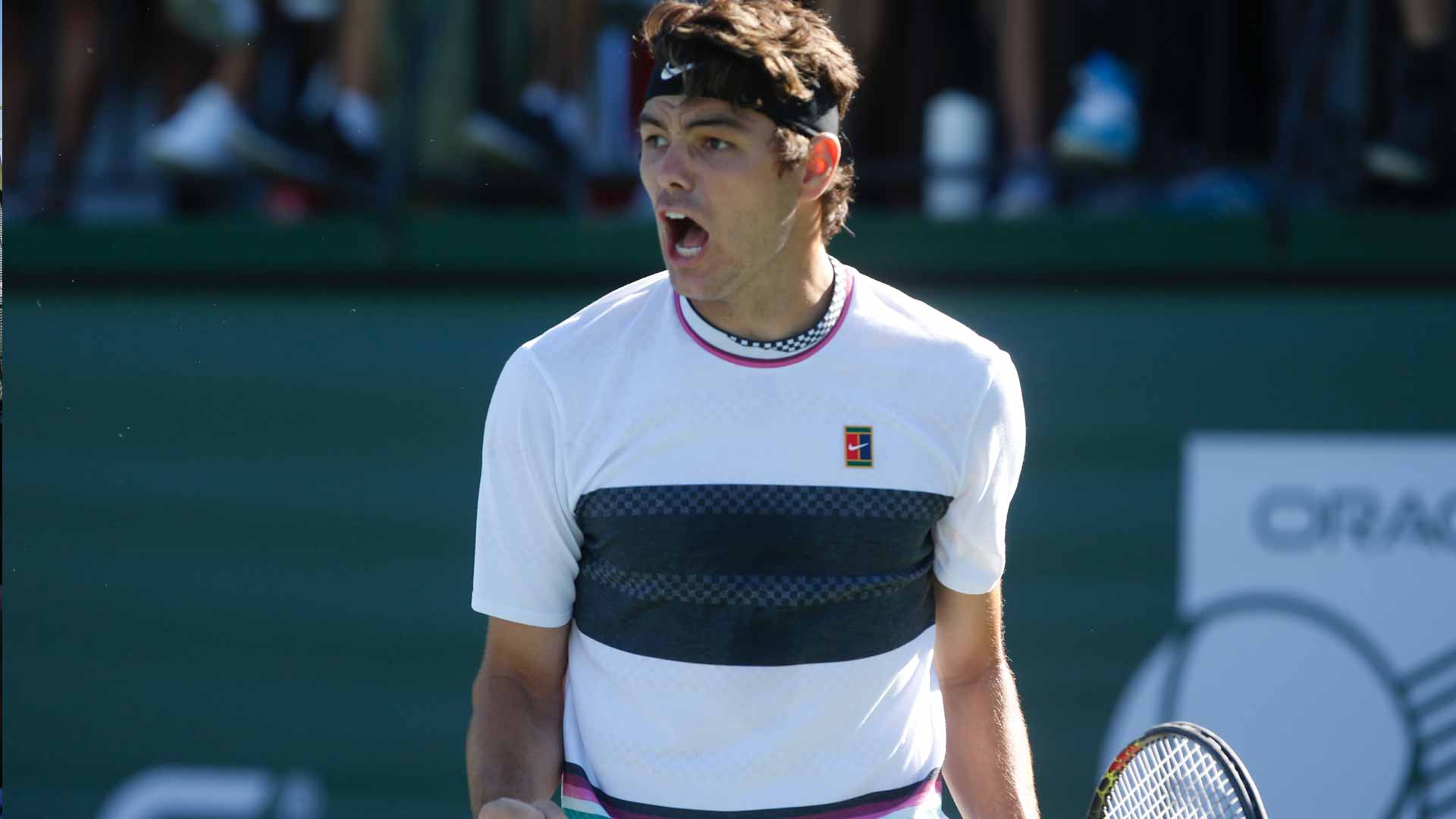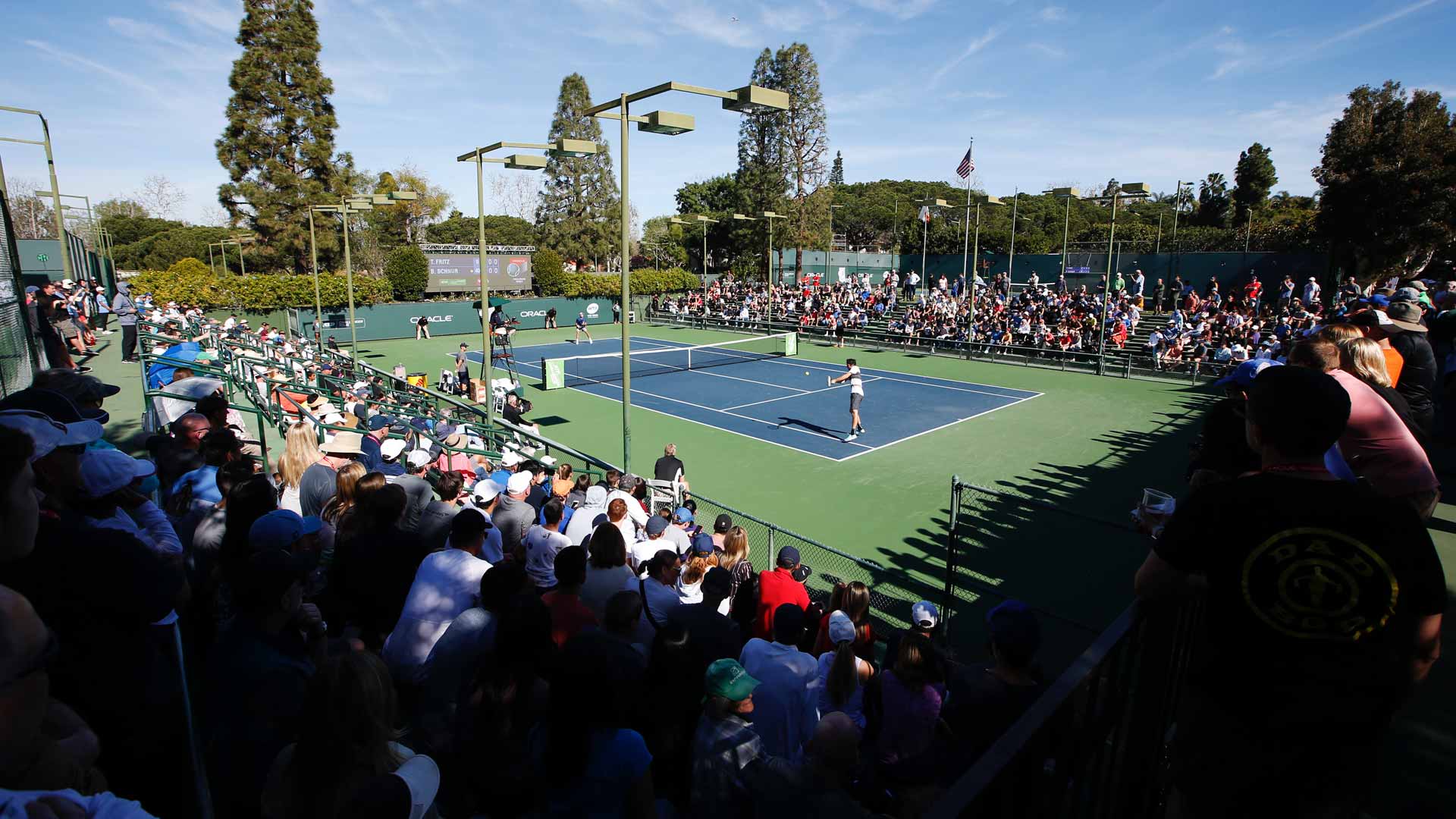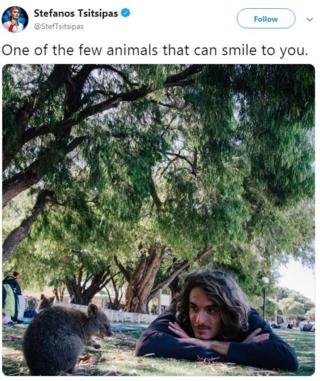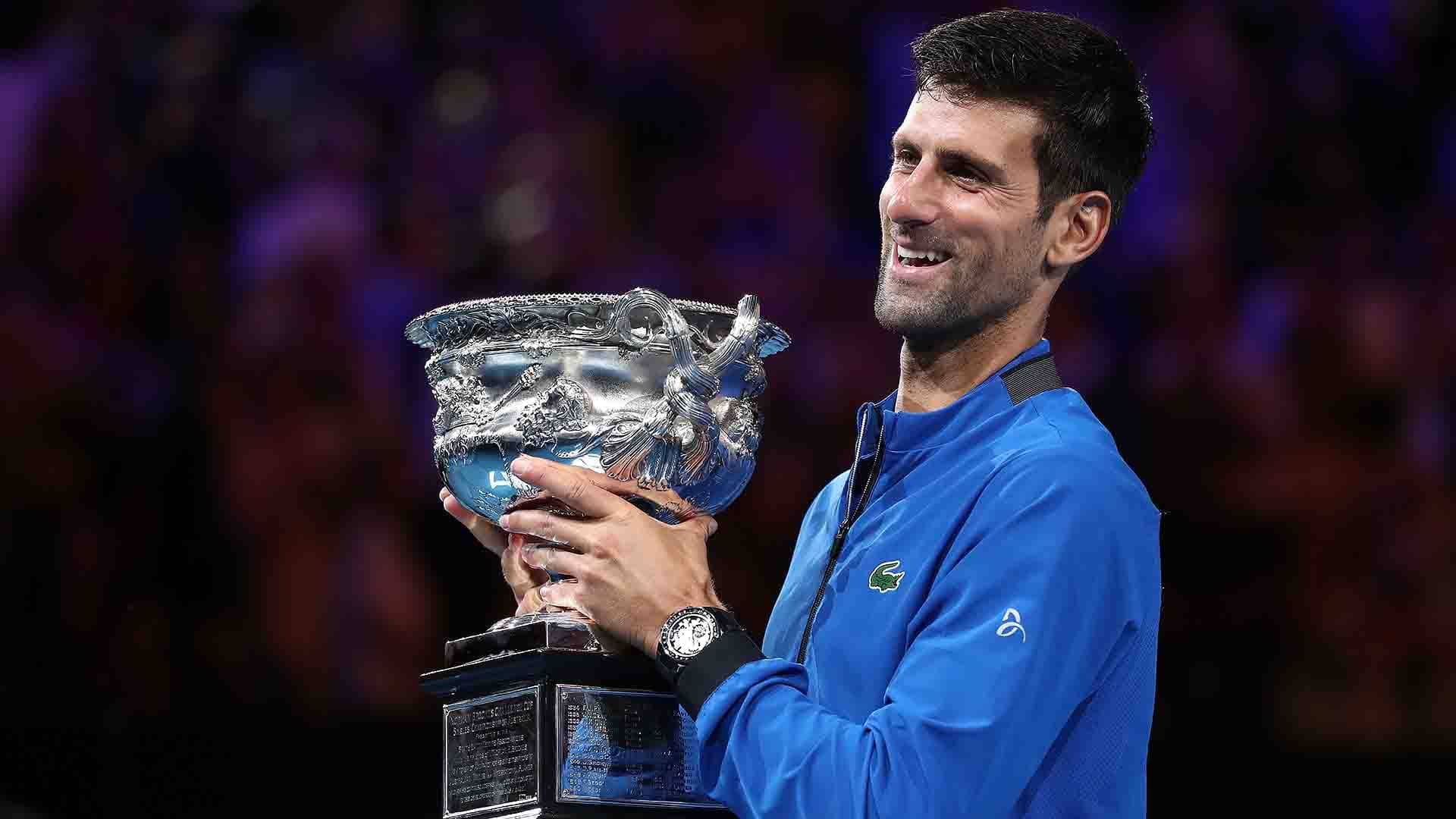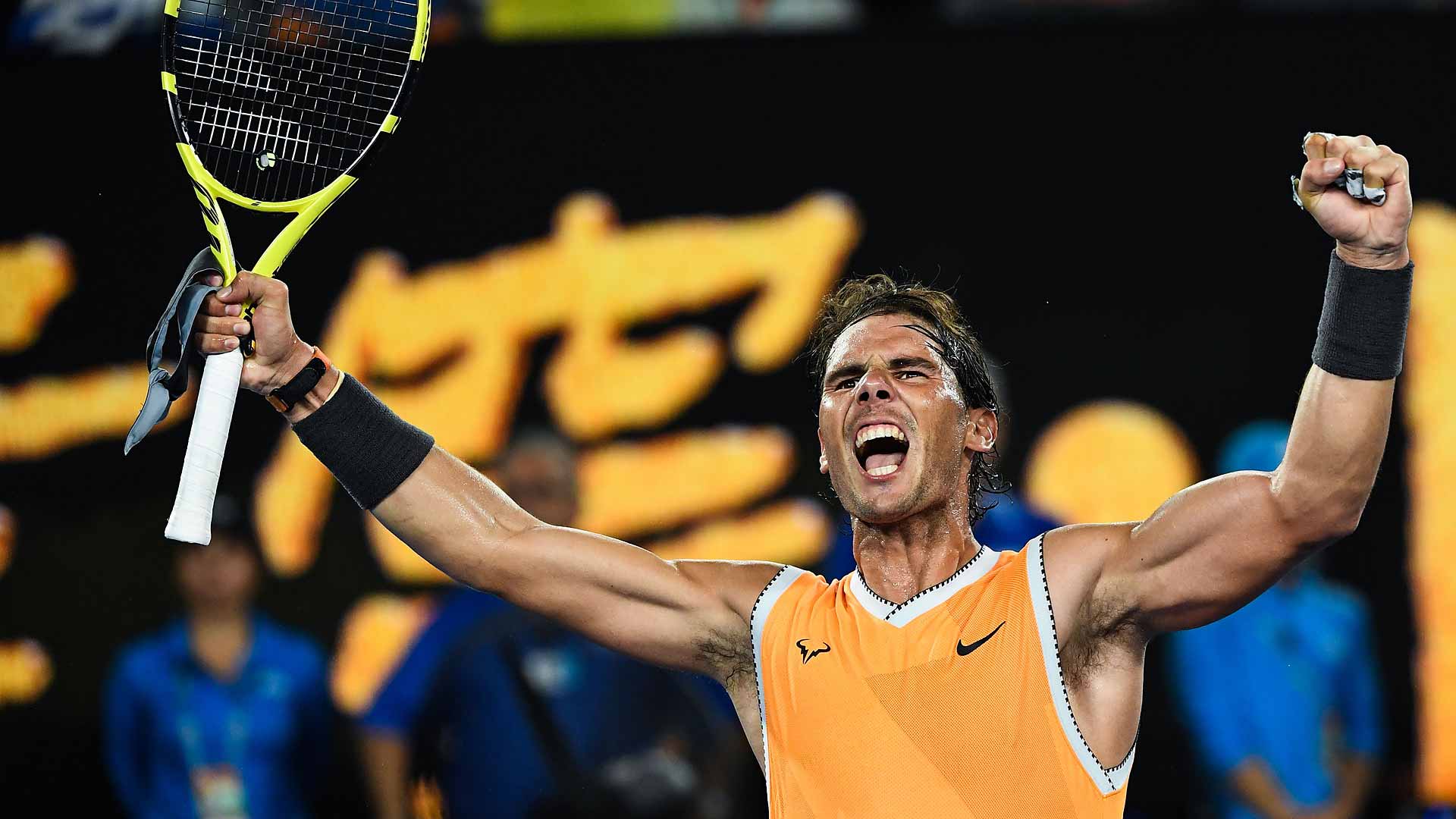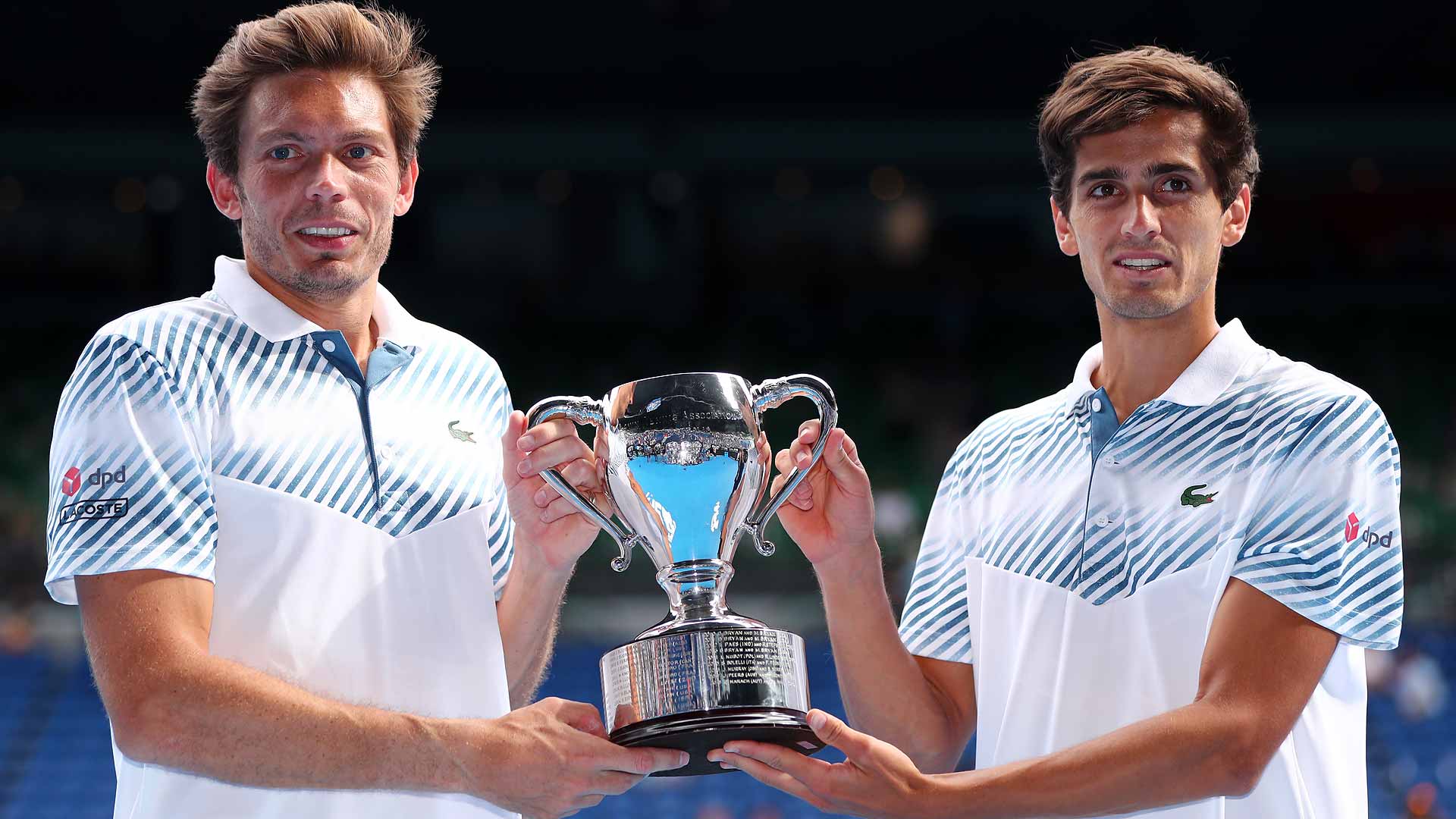Djokovic Closing In On Federer's Big Titles Lead
Djokovic Closing In On Federer’s Big Titles Lead
On Sunday, Novak Djokovic climbed to the top of the Australian Open titles list with his seventh Melbourne crown. And if the Serbian continues his record-setting pace, by April, he could surpass his rivals on another leaderboard.
Djokovic won his 52nd “Big Title” – a combination of Grand Slam, Nitto ATP Finals and ATP Masters 1000 crowns – at Melbourne Park, outplaying Nadal 6-3, 6-2, 6-3 for his 15th Grand Slam crown.
The 31-year-old Djokovic now sits only one Big Title away from tying Roger Federer with 53. Federer, who fell in the fourth round in Australia to Greece’s #NextGenATP star Stefanos Tsitsipas, is the all-time leader in Grand Slams won with 20.
But Djokovic’s Big Title strike rate is already better than anyone’s, including Federer’s. The Serbian has won 52 Big Titles from 173 events, giving him a conversion rate of 3.3. Federer has won a Big Title every 4.2 chances (53/223), while Nadal, the all-time ATP Masters 1000 titles leader, narrowly trails Djokovic with a strike rate of 3.5 (50/174).
“I am aware that making history of the sport that I truly love is something special. Of course, it motivates me. Playing Grand Slams, biggest ATP events, is my utmost priority in this season and in seasons to come,” Djokovic said.
“I do want to definitely focus myself on continuing to improve my game and maintaining the overall well-being that I have – mental, physical, emotional – so I would be able to compete at such a high level for the years to come.”

Djokovic’s next opportunity to add more Big Titles will come in March at the BNP Paribas Open, the season’s first Masters 1000 tournament. He is a five-time champion at the event, and if he wins title No. 6, Djokovic will match Federer atop the Big Titles leaderboard.
Federer, however, has his own record of success in Indian Wells, having also won five titles. Following Indian Wells will be the season’s second Masters 1000 event, the Miami Open presented by Itau.
Current and Former Champions’ Big Titles Won (Records Since 1990)
| Player | Grand Slams | Nitto ATP Finals | 1000s | Total (Avg) |
| Roger Federer | 20/75 | 6/16 | 27/132 | 53/223 (4.2) |
| Novak Djokovic | 15/56 | 5/11 | 32/106 | 52/173 (3.3) |
| Rafael Nadal | 17/54 | 0/8 | 33/112 | 50/174 (3.5) |
| Pete Sampras | 14/52 | 5/11 | 11/83 | 30/146 (4.9) |
| Andre Agassi | 8/61 | 1/13 | 17/90 | 26/164 (6.3) |
| Andy Murray | 3/47 | 1/8 | 14/96 | 18/151 (8.3) |
| Boris Becker* | 2/26 | 2/6 | 5/51 | 9/83 (9.2) |
| Thomas Muster | 1/29 | 0/4 | 8/53 | 9/86 (9.6) |
| Gustavo Kuerten | 3/33 | 1/3 | 5/67 | 9/103 (11.4) |
| Jim Courier | 4/38 | 0/4 | 5/71 | 9/113 (12.6) |
| Stefan Edberg** | 3/28 | 0/4 | 1/24 | 4/56 (14) |
| Marcelo Rios | 0/26 | 0/1 | 5/56 | 5/83 (16.6) |
| Michael Chang | 1/50 | 0/6 | 7/86 | 8/142 (17.8) |
| Marat Safin | 2/41 | 0/3 | 5/87 | 7/131 (18.7) |
| Andy Roddick | 1/46 | 0/6 | 5/75 | 6/127 (21.2) |
* Becker’s four other Grand Slam titles came before 1990.
** Edberg’s three other Grand Slam titles came before 1990.


